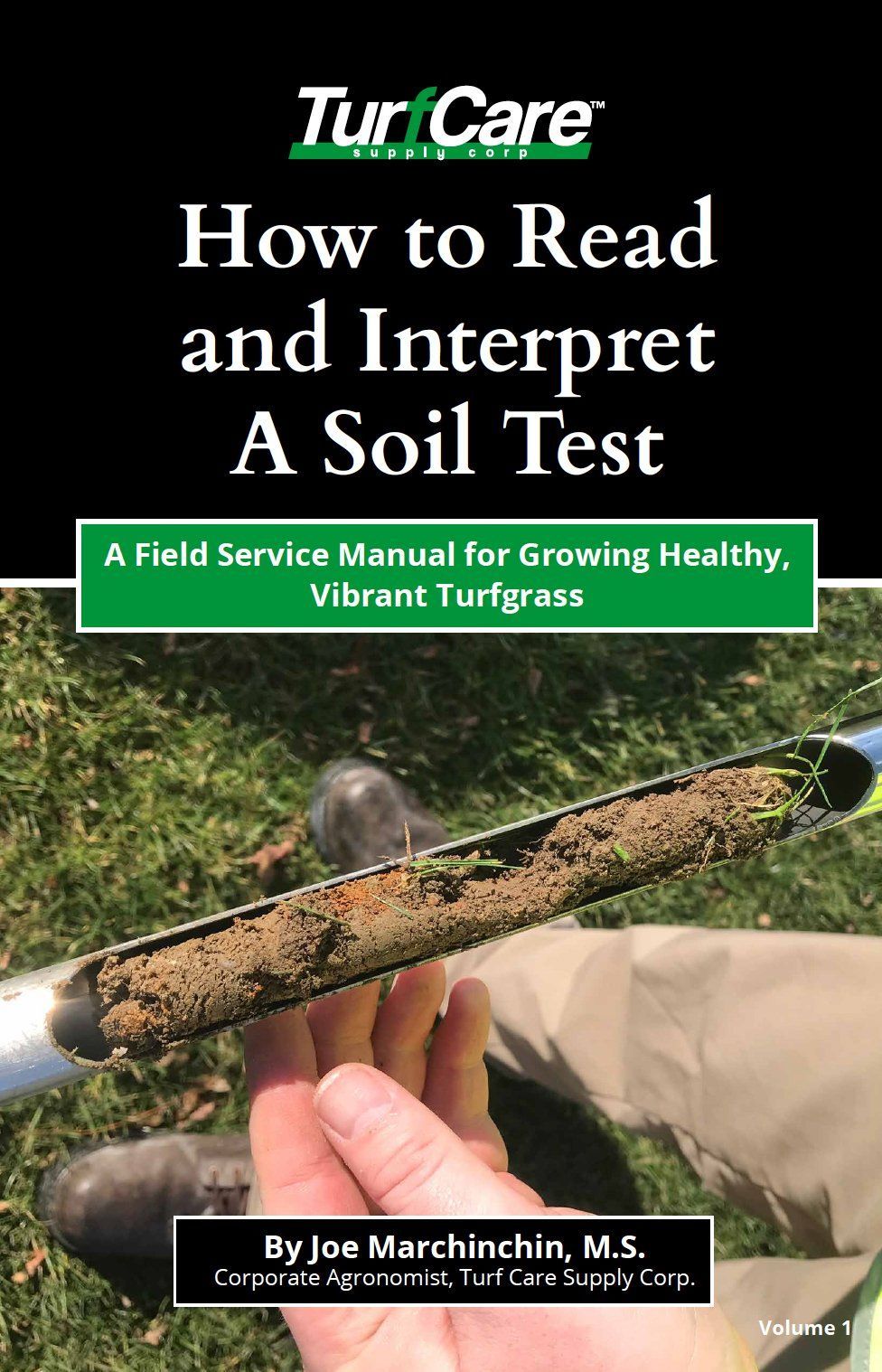How to Read and Interpret a Soil Test

How to Read and Interpret A Soil Test: A Field Service Manual for Growing Healthy, Vibrant Turfgrass (Volume 1)
By Joe Marchinchin, M.S. Corporate Agronomist, Turf Care Supply Corp.
SUMMARY
Introducing the green industry's most comprehensive guide to understanding and analyzing a soil test. Learn step by step as the author, agronomist, Joe Marchinchin reviews and explains each test result and how to adjust your soil for optimal turf health.

INTRODUCTION
Whether participating in a turf/agronomic conference or watching an informative video online, we’ve all heard that infamous suggestion prior to fertilization, “First, make sure to perform a soil test.” If you’re a superintendent of a golf course, there’s a good chance that regular soil tests are an important component of your turf maintenance program. If you’re a landscape professional (or LCO), you might only conduct a soil test if your client’s turf health is struggling, or the client agrees to pay for it. If you’re a typical D.I.Y./homeowner who just wants to get his/her fertilizer down, odds are you’re going to skip it.
Realistically, if you want vibrant, healthy, lush green turf, you should perform a soil test and condition the soil at least once per year.
Why perform a soil test?
A soil test helps agronomists, greenskeepers, lawn care operators and property owners determine which soil amendments and nutrients to add to the soil, and how much. Without soil test data, applicators can only guess what to apply (or not to apply) based on visual cues from the soil and overall plant vigor.
What questions are commonly addressed by a standard soil test?
What is the macro and micronutrient content of my soil?What is the pH of my soil?
What is the organic matter content of my soil?
What is the cation exchange capacity (CEC) of my soil?
What is my soil’s texture?Does my soil suffer from heavy metal contamination?
What data is typically shown on a soil test?
A complete panel of standardized tests typically includes all of the following data:
- Macronutrient content (N, P, K, S) (often with fertilizer recommendations)
- Micronutrient content (Ca, Mg, Mn, Fe, Zn, Cu, B) (often with fertilizer recommendations)
- Other element/ion content (Na, Cl)Heavy metal content (Cd, Ni, Pb, Cr, Hg, As, Ba) (this is usually a separate add-on test)
- pH
- Cation exchange capacity (CEC) (with computed percent cation saturation)
- Excess lime ratingSoluble salts
- Particle size analysis (with soil texture interpretation)
- Organic & Inorganic matter content (the ratio)
Now that we know which tests are typically conducted in a standard full soil analysis, let’s go through each test one by one. In this handbook, we’ll cover pertinent background information related to each test and explain how to interpret your test results. It is our hope that the knowledge you gain here will help you make decisions so that you can positively influence soil to maximize the health and appearance of turf.
The TURFReport Highlights:
Additional Articles and Insights
















